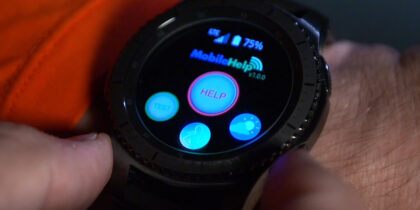The explosion of health-related mobile devices, apps and wearables holds out the promise to healthcare professionals that patients with chronic health conditions will take a proactive part in their own disease management.
In its road map for mobile health technology (mHealth), the Healthcare Information and Management Systems Society (HIMSS) writes, “Remote monitoring devices can help patients record their own health status and instantaneously send images or information to physicians. This keeps patients out of the physician’s office, allows time for the physician with other patients or care-related activities, and ultimately helps reduce costs by keeping patients out of the hospital.”
Lifestyle Digital Health Tools Lead the Pack
Although HIMSS describes the ideal effect of using remote monitoring tools, a recent survey shows that the vast majority of U.S. consumers with chronic issues such as mental illness, back pain, obesity, heart disease and diabetes simply aren’t using their mobile and/or Internet-connected digital health apps to control these conditions. In a recent survey by HealthMine of insured Americans, 59 percent of respondents said they have at least one chronic health condition, but only 7 percent said they use any type of disease management tool.
In contrast, the survey respondents showed a strong preference for lifestyle health apps. The five most frequently used digital health tools were fitness apps (50 percent), nutrition apps (46 percent), weight loss apps (39 percent), wearable activity trackers (38 percent) and heart rate apps (30 percent). More than half of those surveyed are enrolled in a wellness program, with 33 percent receiving their health app from their program.
Slow Adoption of Digital Disease Management Tools
While the use of fitness and lifestyle-related digital health tools is encouraging for long-term wellness efforts, consumer adoption of digital disease management tools is critical to controlling healthcare costs. As HIMSS noted in its mHealth road map, “Chronic disease drives and remains a significant portion of overall healthcare costs.”
That’s especially significant given that a greater percentage of newly insured consumers have more serious health problems compared to those who were insured before the Affordable Care Act expanded access to health insurance, a Blue Cross Blue Shield study reveals. The newly insured suffer from higher rates of hypertension, depression, diabetes, coronary artery disease, HIV and Hepatitis C than previously insured consumers. As a result, they require more intensive and expensive care.
Digital health tools are an excellent way for consumers to control their chronic diseases, but increasing patient engagement remains an ongoing challenge. “Involving patients with chronic diseases in their healthcare has been difficult and largely unsuccessful both in terms of engagement and retention,” according to HIMSS. This should change slowly over time as consumers become more educated about — and comfortable with — digital health tools for disease management.
Innovations in wearables are one of the leading healthcare trends of 2016. Learn about more trends that are changing the healthcare industry here.






